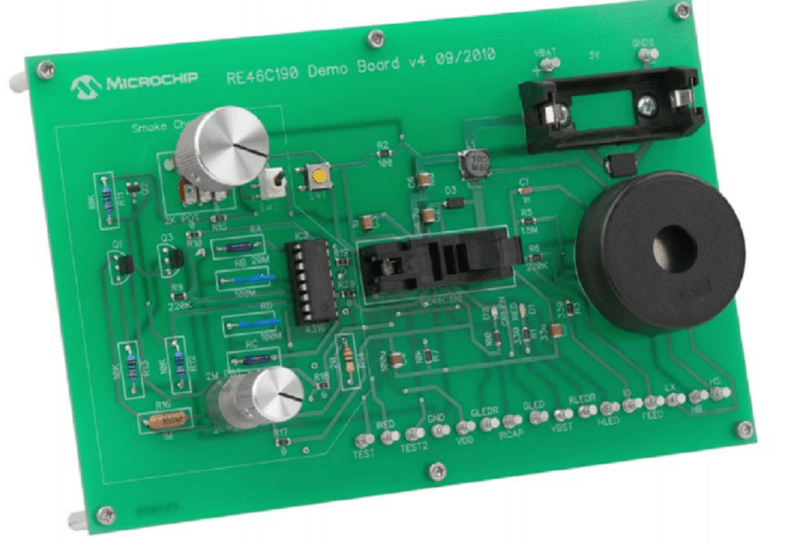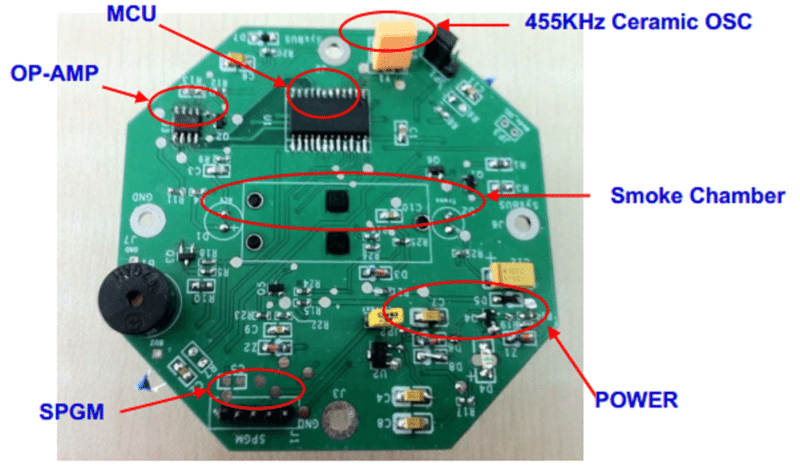Many buildings and homes need smoke detectors to alarm at the initial stage of a developing fire accident. To prevent damage, smoke detectors perform reliable monitoring of the smoke density and can alarm you when you are asleep, busy or in a different place. A smoke detector basically consists of two parts: a sensor to sense the smoke and a very loud alarm to wake people up.
Two most common types of smoke detectors used today are photoelectric detectors (using optical detection) and ionisation detectors. Ionization detectors have fast response times to fast flaming fires but they malfunction under noisy and dusty environments and cause pollution to the environment. In contrast, Photoelectric detectors have fast responses to slow smoldering fires. They are gaining popularity due to drawbacks of ionization detectors. The principle of operation of Photoelectric detectors is simple. When a beam of light is scattered and reflected by smoke particles on to a photosensitive element (generally a photodiode), the photodiode responds and a microcontroller raises an alarm.
Get more information on photo-diode-based smoke detectors in these industry-ready reference designs with all necessary documents. Take a look!
Programmable Photo Smoke Detector:

This reference design is a programmable photo smoke detector with minimum external component count. The board can operate from a CR123A battery, or using a 3V power supply. To test the board, the smoke detect operation can be emulated by slowly turning a potentiometer provided on the board. The design also provides additional features such as local alarm indication, programmable setup, programmable calibration and programmable feature selection. The audio and visual alarm indications are provided with LED and piezo horn sounds. More on this Reference Design
Ultra-low-power Photodiode-based Smoke Detector:

Here is a reliable smoke detector reference design using an infrared (IR) diode. The design consumes ultra-low-power by using a low-cost 8-bit microcontroller S3F8S28 from Samsung ideal for smoke detector application. The MCU pulses an IR diode periodically and examines the IR receiver’s signal to check the presence of smoke in a chamber. For reliable signal detection, the signal is amplified before sending to the on-chip analog to digital converter (ADC) of the MCU. The system consumes a very little power of less than 200uA. A temperature sensor can also be used to detect different fire accident. The detector’s working status is checked periodically for reliable operation.







